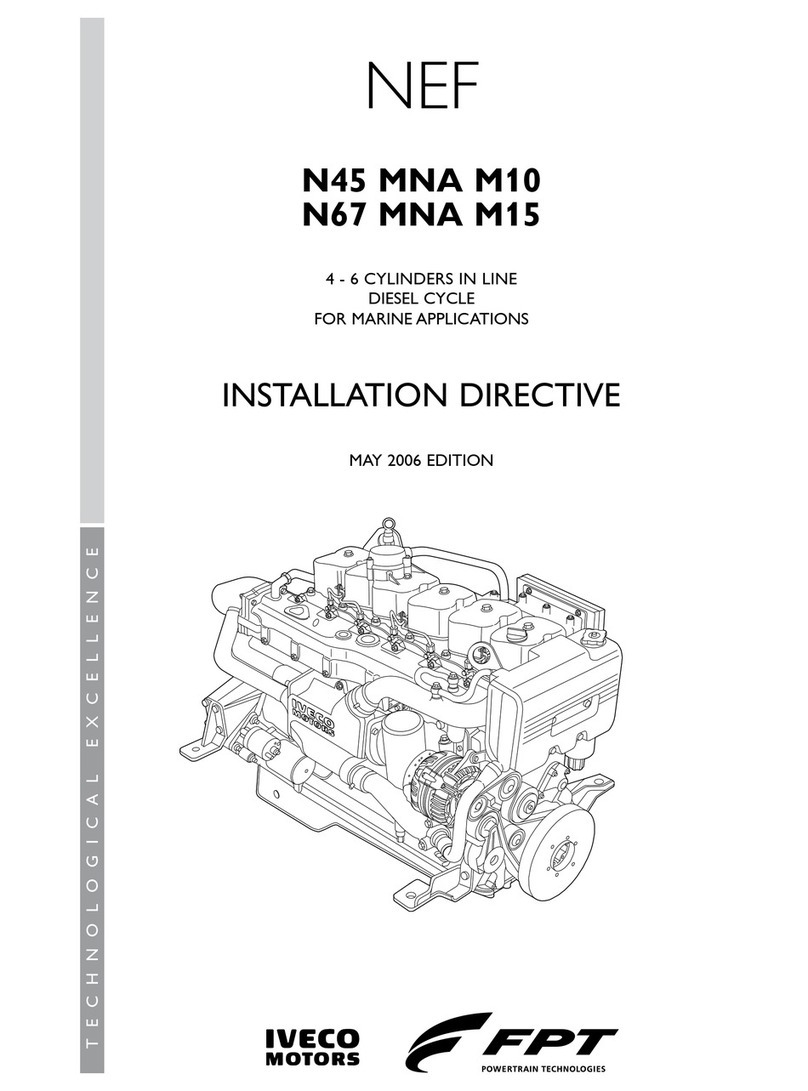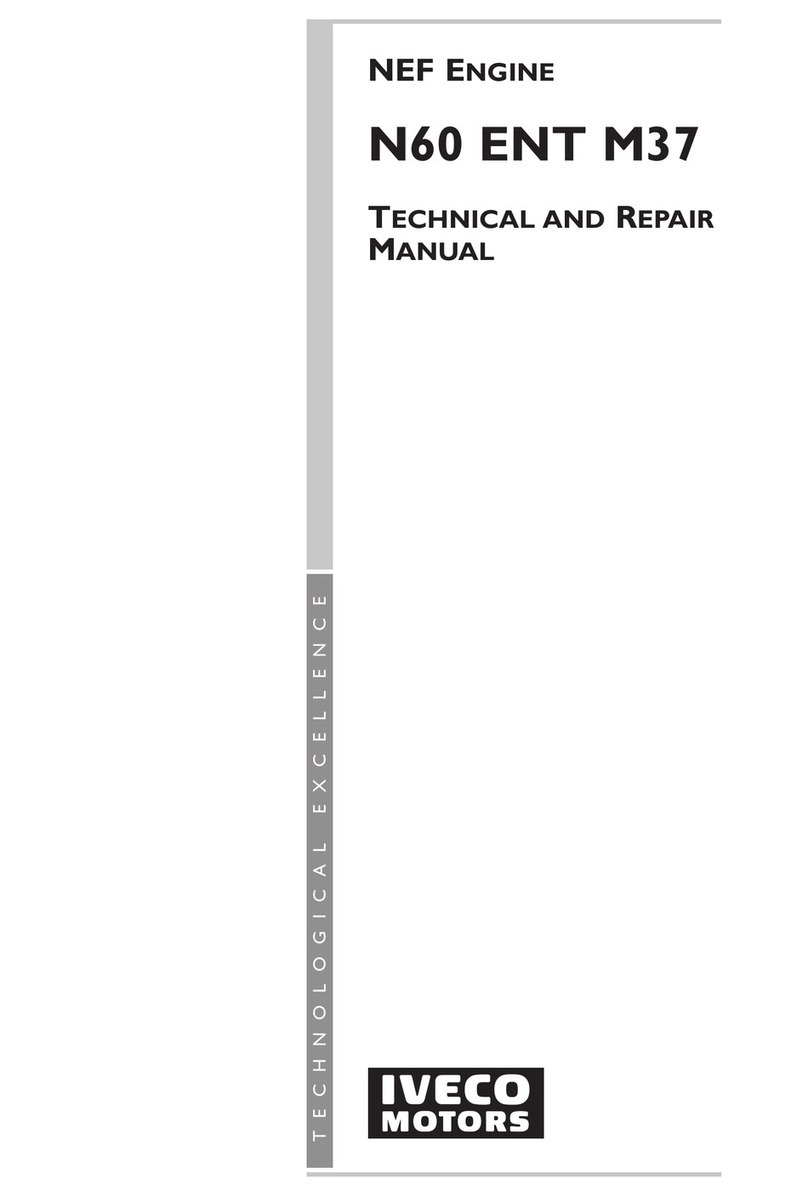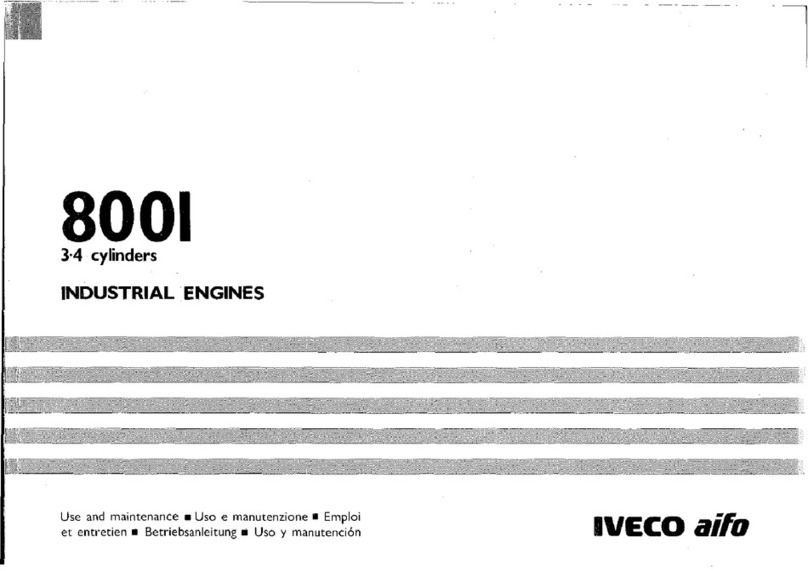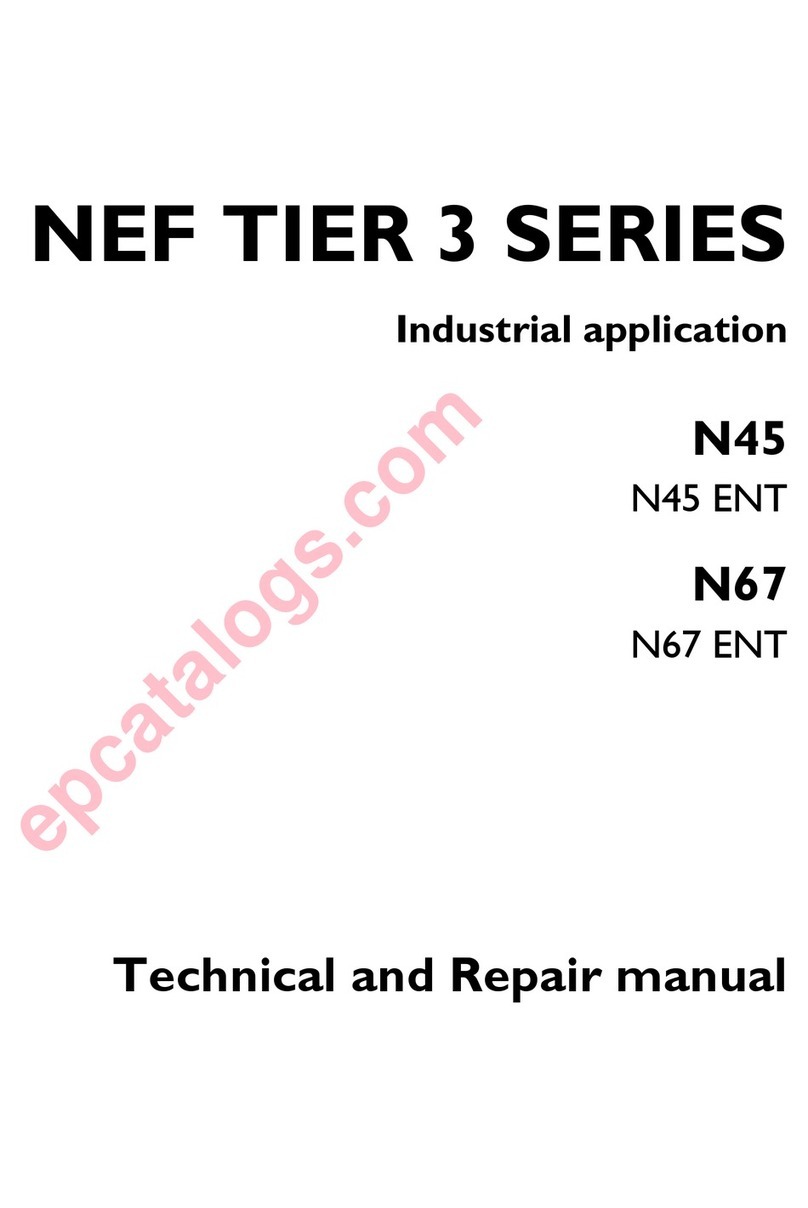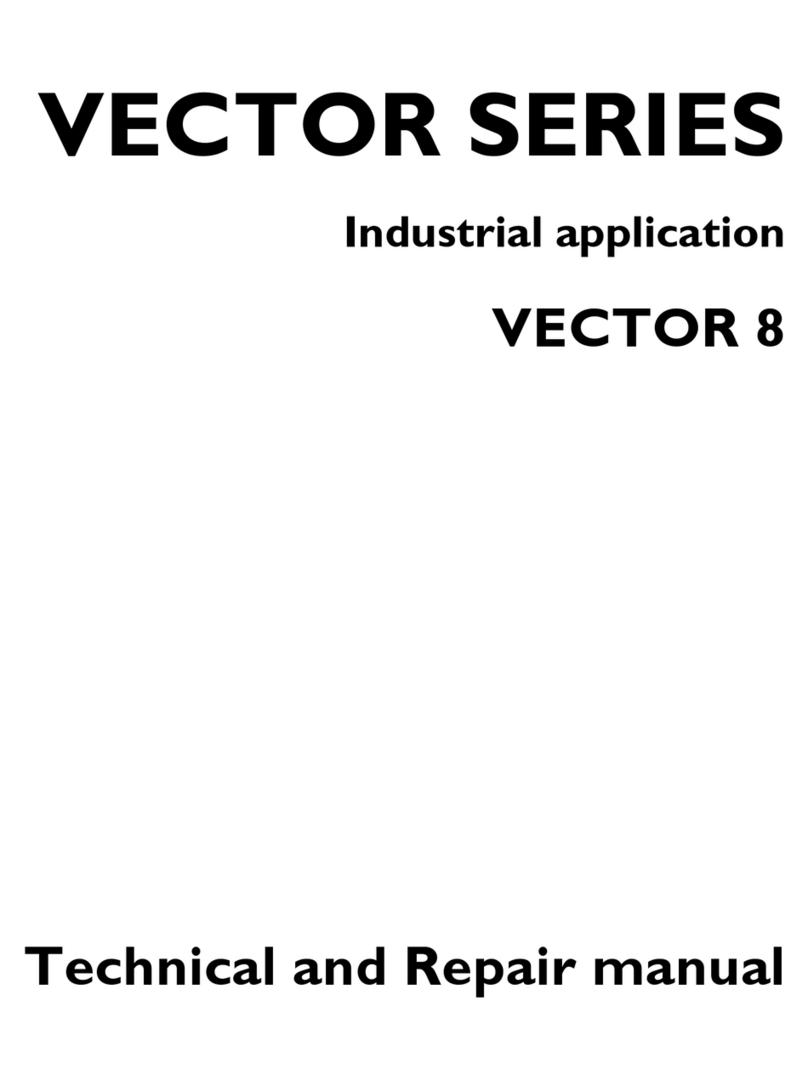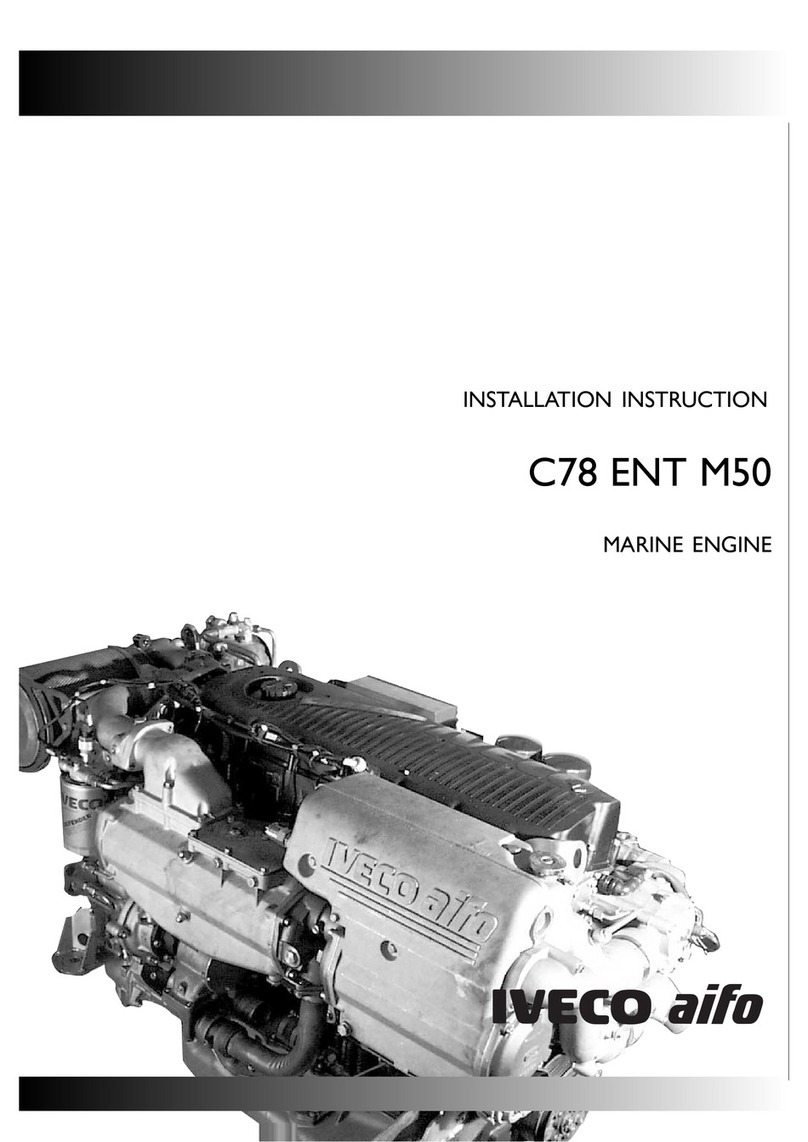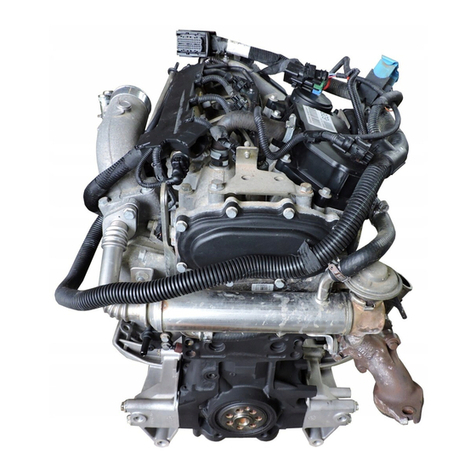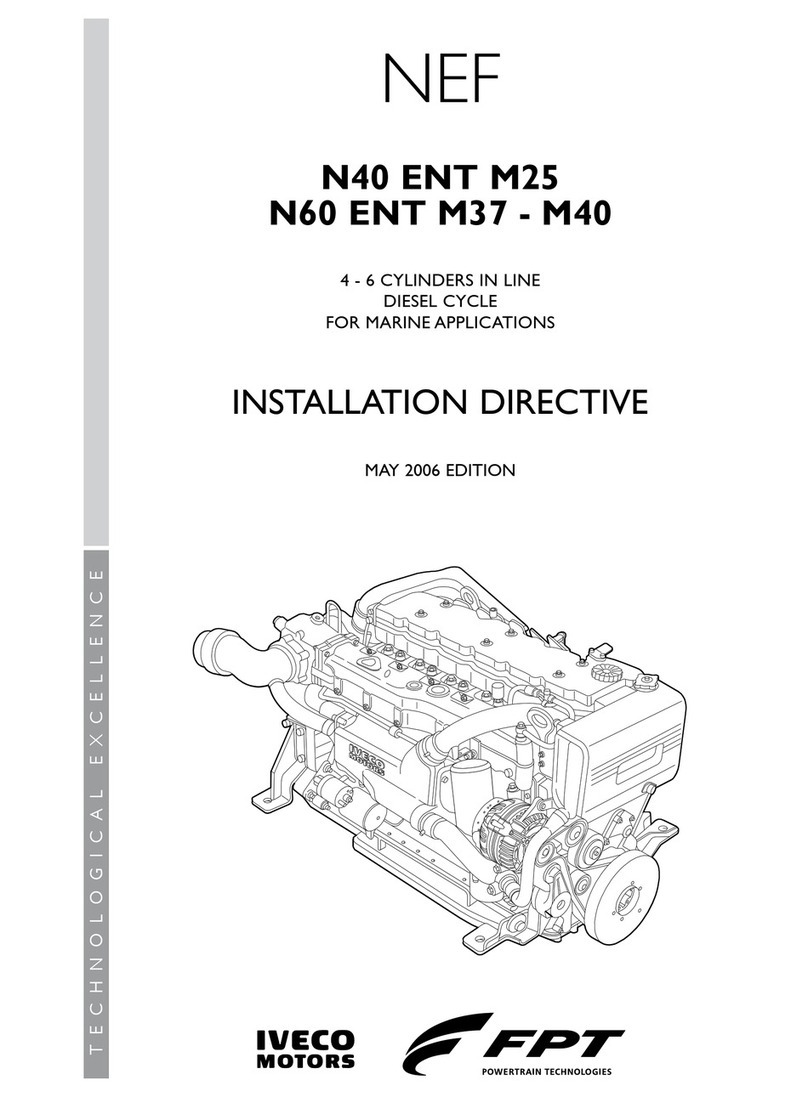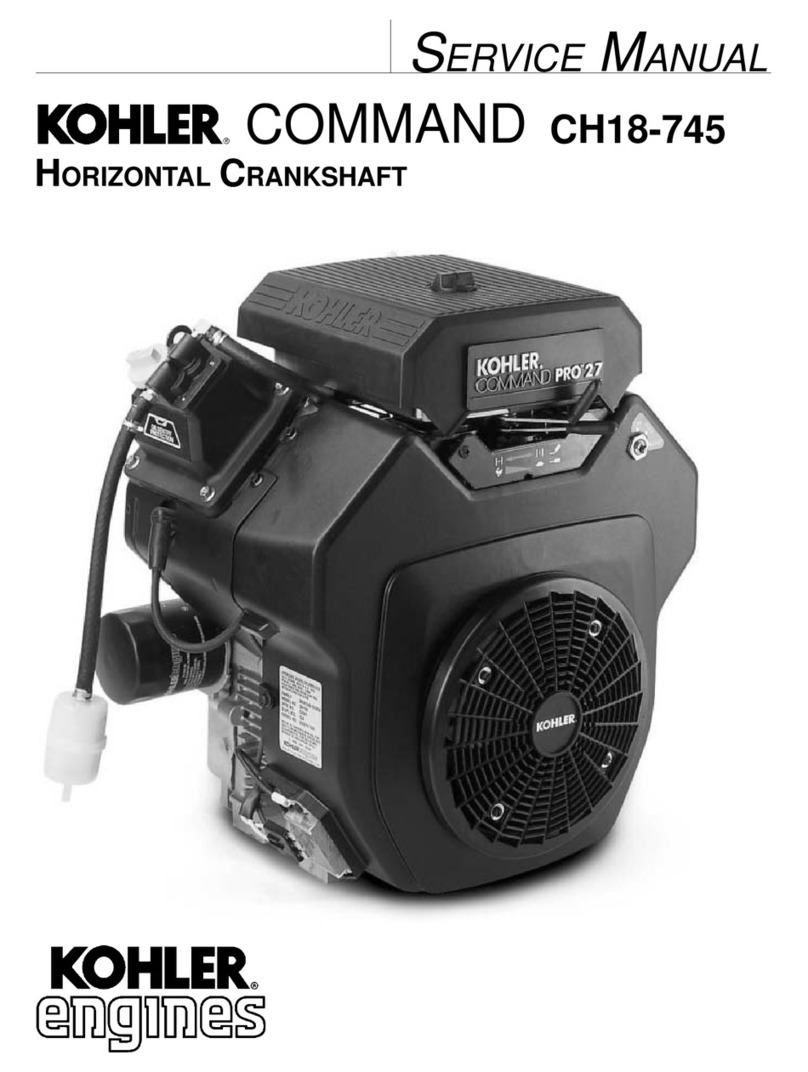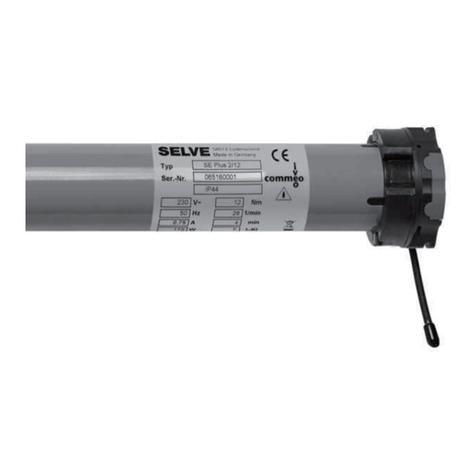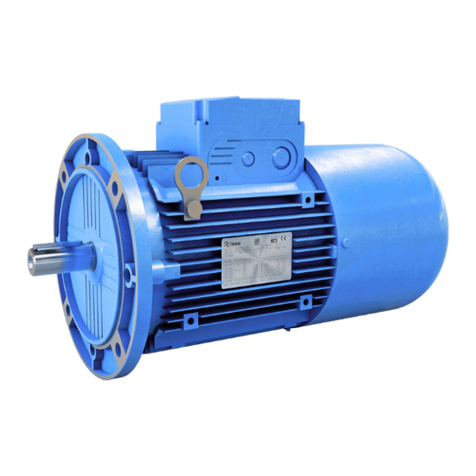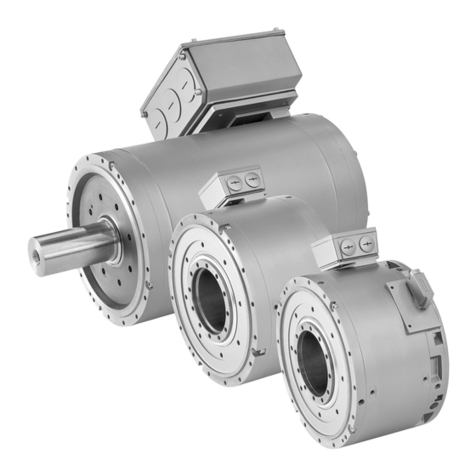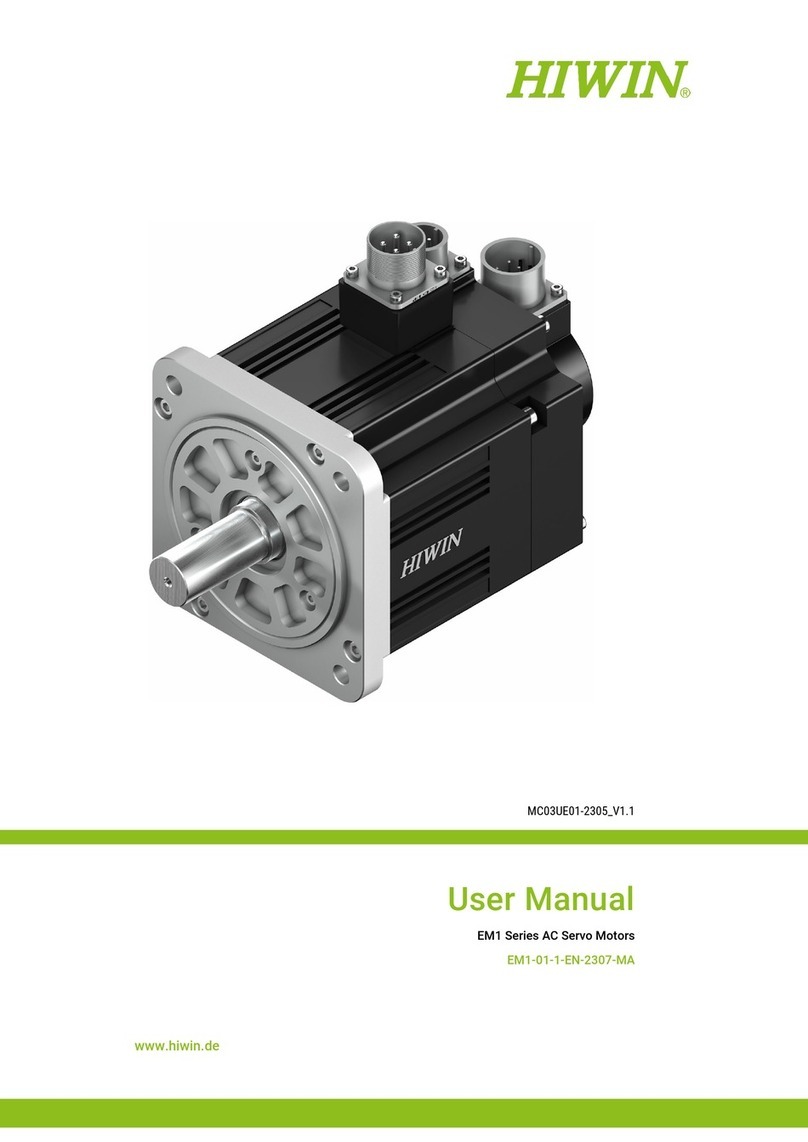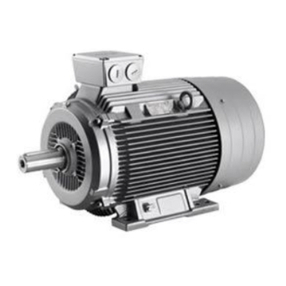MARCH 2004 V
MARINE ENGINES INSTALLATION
Aim of this handbook
This handbook has been written to give you the basic information and instructions for the correct
choice and installation of IVECO marine Diesel engines.
The get the best performance and longest life from your engine you must install it correctly.The infor-
mation about the hulls and the propellers are provided as general guidelines for their applications in
relation to the choice and installation of the engine.
The content of this publication does not replace the expertise and work of marine designers and engi-
neers who have the full responsibility for the choice of the boat engine.
Further and more detailed information about the characteristics of IVECO engines can be found in the
specific publications.
Every information included in this Installation Handbook is correct at the time of approval for printing.
IVECO reserves the right to make changes without prior notice, at any time, for technical or commer-
cial reasons or possible adaptations to the laws of the different Countries and declines any responsibil-
ity for possible errors or omissions.
General installation criteria
As an introduction to this Handbook, reference must be made to the following basic installation criteria:
■choose the engine which is most suitable for the hull according to the power, torque and rpm
requirements and considering the type of use and the environmental conditions for the engine
operation (temperature, humidity, altitude);
■connect the engine to the driven elements (reducer-inverter, propeller and relevant axis, auxiliary
organs, etc.) in the correct way, bearing in mind the problems linked to the drive and the resulting
vibrations;
■choose the sea water circuit or the possible keel cooling system of the right size;
■adjust the size of the engine compartment or the engine room to facilitate access to the engine and
the connected parts, both for ordinary maintenance operations and possible repairing operations;
■foresee the suitable air intake needed for the engine combustion and fundamental for the engine
room ventilation (clean, fresh, without water);
■get the fuel system dimensioned and positioned correctly;
■give the priority to those safety problems concerning the personnel in charge of the engine oper-
ation, such as:
- use of the suitable protections and guards for each exposed moving part (pulleys, shafts,
belts, etc.)
- positioning of the tie rods and the controls in an easily accessible area, but safe and protected
at the same time
- correct insulation of wires and electrical parts
- suitable protection and insulation of all exhaust pipes.
Laws and regulations
The IVECO marine engines are designed and manufactured in compliance with the laws in force and
are approved by the main Classification Bodies.
As the subject is particularly complex, it is always necessary to make reference to the specific laws of
each country which can regulate the different aspects of this subject in different ways, especially:
■the limitations to gas and noise emissions
■the restrictions to the installed power for the operation in dangerous areas
■the engine characteristics to meet the requirements of particular electrical systems and safety
devices.
PREMISE
